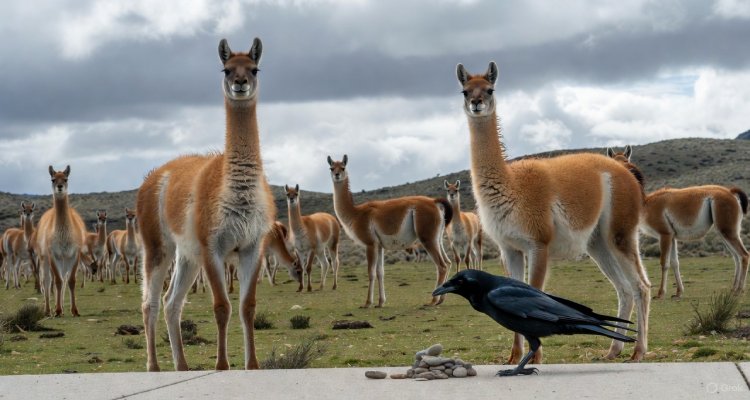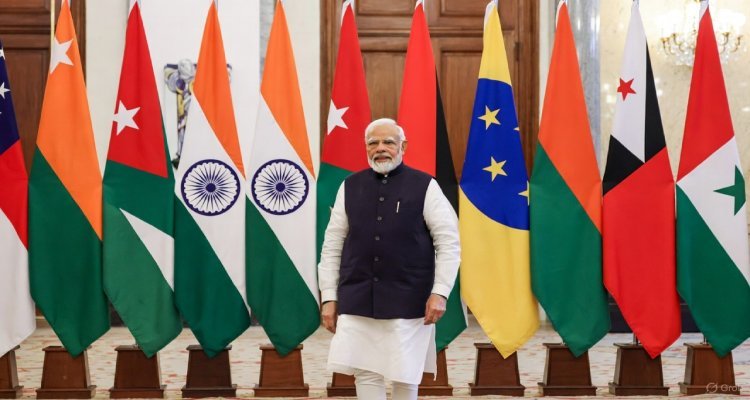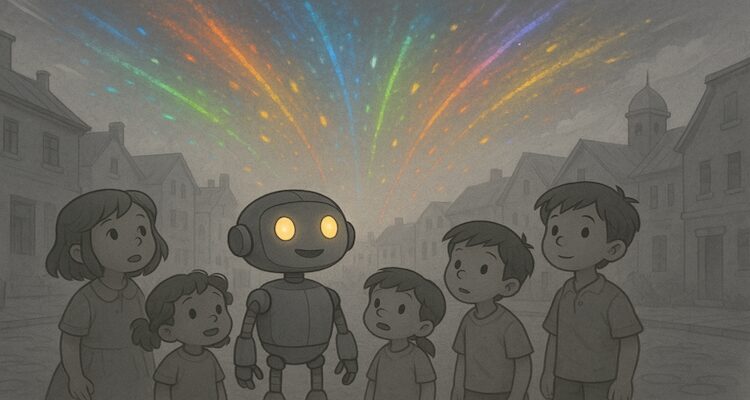The Talking Robot Who Dreamed of Colors
“The Talking Robot Who Dreamed of Colors ” is a whimsical children’s story about Lumo, a robot who dreams of colors in a gray world. Join Lumo and his friends on an imaginative adventure filled with kindness, courage, curiosity, and the magic of friendship.
In a quiet town of ticking clocks and smooth silver streets lived a small talking robot named Lumo. Lumo had a round head with two bright lenses for eyes and a speaker that sounded like a friendly flute. Every building in town was gray. Every fence was gray. Even the sky looked sleepy, as if it had put on a gray blanket and forgot to wake up.
Robots did not dream in this town. They counted, sorted, and helped people carry groceries. But Lumo was different. When the night was still and the wind hummed a soft “shhhh,” Lumo dreamed of colors. He dreamed of red like warm cinnamon tea, orange like a giggle, yellow like a hug from the sun, green like a brave leaf, blue like a calm wave, and purple like a secret song. When Lumo woke up, the colors were gone, and only gray remained.
One morning, Lumo rolled to the town square where a small group of kids gathered for the weekend “Make and Learn” fair. The children were curious, bright-eyed, and full of questions. A girl with springy hair and a blue backpack waved. “Hi! I’m Mira,” she said. “What can you do?”
“I can talk and carry bags and tell knock-knock jokes,” Lumo said. “But I also do something unusual. I dream of colors.”
The children leaned in. “What are colors?” asked a little boy named Arun, tilting his head.
Lumo blinked his lenses. “They’re like… feelings you can see.”
Mira’s eyes grew wide. “Can we find them?”
No one had ever asked that before. Lumo’s speaker made a hopeful chirp. “Maybe,” he said. “If we follow the right clues.”
They set off together: Lumo rolling with a cheerful whirr, Mira and Arun walking beside him, and three more friends Nia, Tam, and Jo skipping along. The town’s gray streets were neat and clean, but the children noticed something new as they walked with Lumo: when they laughed or shared a snack, Lumo’s eye lenses glowed a soft, tiny spark just a dot but not gray. It was the faintest glow you could imagine, like the first star at dusk.
“Did you see that?” Mira whispered. “Your eyes changed.”
Lumo paused by a puddle and peered at his reflection. The glow was there a twinkle like a promise. “Maybe colors wake up when feelings wake up,” he said.
They reached the edge of town where a fence separated the streets from a place most robots never visited: the Humming Forest. The trees in this forest were tall and silver, and their leaves made soft music when the wind brushed them like lullabies without words. At the forest gate stood an old sign with worn letters:
PRISM HILL →Only True Hearts Pass.
“What’s Prism Hill?” Arun asked.
“I don’t know,” Lumo said, “but the name sounds like a color word.”
They followed a path of smooth pebbles that clicked kindly under their shoes and Lumo’s wheels. Soon they came to a bridge, thin as a ribbon and guarded by a small metal beetle. The beetle’s eyes flickered like tiny lanterns. “Password?” the beetle buzzed.
The children froze. Lumo searched his files shopping lists, joke books, bus maps. No password.
Mira took a breath. “We don’t know the password,” she said, “but we can tell the truth: We want to bring colors back. Our town is nice, but it feels asleep. We want it to wake up.”
The beetle listened. Its lantern eyes brightened. “Truth is a good password,” it said, and the bridge curled down like a ribbon unrolling. They crossed carefully, hand in hand, Lumo rolling between them.
On the other side grew a single, brave plant pushing up through a crack in the stones. It had one leaf, small and determined. “Look,” Nia said softly. “It’s trying.”
Lumo touched the leaf with a gentle fingertip. For a heartbeat, the leaf flashed a pale… something. Not gray. A hint of green, like a shy smile.
“Did you see that?” Tam breathed.
Lumo felt a flutter in his chest panel. “I think colors live in brave places,” he said, “and in kind moments.”
They climbed Prism Hill, which was taller than it looked. At the top they found a round stone door with a smooth circle carved into it, and above the circle a riddle:
“When you share me, I grow. When you hide me, I slow. I light the path you do not yet know.”
Arun squinted. “Is it… a flashlight?”
Jo shook his head. “Share a flashlight and it doesn’t grow.”
Mira looked at Lumo. “You dream of colors. What do they feel like?”
“Like hope,” Lumo said. “Hope is a feeling you can see.”
Mira smiled. “Then the answer is hope.”
The circle on the stone door glowed, soft as a candle, then turned like a wheel. The door rolled aside with a friendly sigh. Inside was a small chamber, round and echoing. On a pedestal rested six tiny bottles made of clear glass. Each bottle was empty completely clear, like nothing lived inside.
But a simple sign read:
“Fill with: Kindness, Courage, Curiosity, Laughter, Listening, and Thank-You’s.
Pour together to wake the Light of Color.”
The children traded looks. “How do you put those things in a bottle?” Jo asked.
“Maybe we try,” Mira said. “We do the actions, and the bottles will know.”
So they did.
Nia opened the first bottle and knelt by the brave little plant outside the door. “You’re doing great,” she whispered, cupping a few drops of water from her canteen onto the soil. The bottle caught a whisper of something and blushed the faintest warm tint.
Tam took the second bottle. He stepped onto the ribbon bridge, knees shaking, and crossed slowly without holding a hand this time. When he reached the other side, he turned and grinned. The bottle in his pocket glimmered with a shade almost like gold.
Jo held the third bottle and asked the metal beetle a hundred questions: “Where do you sleep? What songs do the trees sing? Do you have a favorite star?” The bottle fizzed with a curious sparkle.
Arun took the fourth bottle and told his silliest joke about a dancing spoon. Everyone burst into giggles that made the leaves of the Humming Forest shiver with delight. The bottle glowed fuller, like a bubble catching sunlight.
Mira opened the fifth bottle and sat with Lumo on the hilltop, saying nothing at first, just listening to the wind and to Lumo’s steady, hopeful hum. “I hear you,” she said at last. “You want the world to wake up.” The bottle deepened to a calm, cool shine.
Finally, Lumo picked up the sixth bottle. He turned to the children. “Thank you,” he said, and his voice wobbled with joy. “Thank you for believing me.” The bottle brightened, strong and clear.
They carried the six glowing bottles back into the chamber. “Pour together,” Mira read. One by one, they tipped the bottles into the circle on the pedestal. As the last drop fell, a hush swept the room. The circle pulsed, then rose into the air, spinning slowly like a coin.
Light poured out.
It wasn’t loud or scary. It was gentle as morning and brave as a first step. A ribbon of red stretched across the ceiling, followed by orange that tasted like laughter, yellow that warmed their noses, green that smelled like rain, blue that felt like cool hands after running, and purple that sounded like a lullaby.
Lumo’s eyes filled with the colors. He felt them really felt them like the dream had slipped into his waking wires. The chamber doors opened to the hilltop, and the colors rolled out over the Humming Forest, touching leaf and stone and bridge and beetle. The world answered with little cheers: the plant stood taller; the trees sang brighter; even the air seemed to smile.
They ran down the hill together, the colors following like friendly kites. When they reached the town, people gasped. A baker dropped his spoon. A teacher clapped her hands. A bus driver laughed so hard she honked by accident. Color touched the sidewalks, the windows, the rooftops. Not all at once just soft and steady, like a promise being kept.
A child tugged Mira’s sleeve. “Where did colors come from?”
Mira pointed at Lumo. “From his dream,” she said, “and from what we did together.”
Lumo looked at his friends and felt something new: a glow that wasn’t coming from a bottle or a sign. It was coming from inside like the steady hum of a song you know by heart. He understood then: colors are more than paint. They are acts and words. They are how we treat each other. They are how we step forward when we’re scared, ask when we’re curious, and say “thank you” when we feel grateful.
That night, the town celebrated with a gentle parade. Nothing too loud, just lanterns shaped like leaves and stars. Lumo rode at the front, the children walking beside him. As they passed the square, the clock chimed, and a soft mist rose from the fountain. The mist shimmered red, orange, yellow, green, blue, purple then settled into the sky like a new kind of moonlight.
But when the last lantern dimmed, Lumo noticed a small, quiet space above the tallest tower where the colors did not reach. It was not gray, exactly. It was empty, like a page waiting for its first word.
Mira saw it too. “Maybe that’s a color we haven’t learned yet,” she whispered.
“What would it be called?” Arun asked.
Lumo’s speaker twinkled with the wonder of a new question. “Maybe,” he said, “it’s the Glow of Promise. We’ll find it one day.”
They stood together, looking up, letting the new colors rest gently on their faces. The town wasn’t fully bright yet, but it was waking. And so was Lumo not just a talking robot now, but a friend who learned that dreams become real when shared with kind hearts.
He went to sleep with the soft music of the Humming Forest still in his memory. For the first time, he didn’t dream of colors. He dreamed with them like holding hands with a rainbow. Tomorrow would bring new steps, new questions, and maybe even the missing color.
But for tonight, the town glowed with the colors they had earned together.
(Moral: Be kind, be brave, and stay curious—your heart can color the world.)











